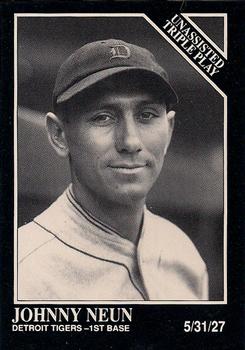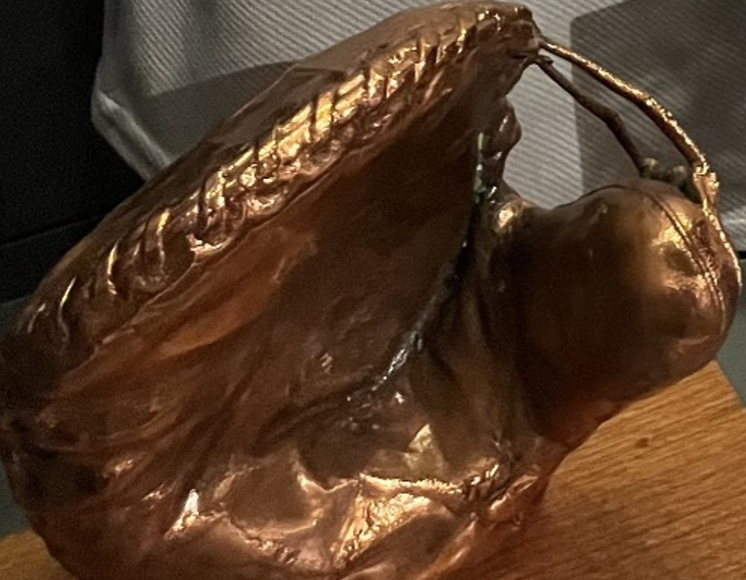May 31, 1927: Johnny Neun’s unassisted triple play preserves victory for Detroit Tigers
 Johnny Neun, the Detroit Tigers’ 26-year-old backup first baseman, was having breakfast with teammates on May 31, 1927. An article in the morning newspaper reported the unassisted triple play turned by Chicago Cubs shortstop Jimmy Cooney the day before, prompting Neun to remark, “I wonder how long it will be before anybody makes another one.”1
Johnny Neun, the Detroit Tigers’ 26-year-old backup first baseman, was having breakfast with teammates on May 31, 1927. An article in the morning newspaper reported the unassisted triple play turned by Chicago Cubs shortstop Jimmy Cooney the day before, prompting Neun to remark, “I wonder how long it will be before anybody makes another one.”1
Neun answered his musing hours later by turning his own unassisted triple play in the ninth inning, ending the game2 and preserving the Tigers’ 1-0 victory over the Cleveland Indians. This was the seventh3 unassisted triple play in the American and National Leagues, and it was the second time a first baseman had accomplished the feat.4
A switch-hitting left-handed thrower, Neun was in his third season with the Tigers. In his previous two seasons, he was a frequent pinch-hitter and occasional pinch-runner and had appeared in 62 games at first base. In 1927, under new manager George Moriarty, he began the season in the same role. On May 30 Neun made his first start, replacing the slumping first baseman Lu Blue, who was 5-for-47 (.106) in his last 13 games.
Both teams had been above .500 in 1926. Detroit finished in sixth place in the AL, 12 games behind the New York Yankees, while Cleveland was second, three games back. Both were off to slow starts in 1927. After they split a doubleheader on May 30, the Tigers (17-22) were in seventh place, 1½ games behind the fifth-place Indians (20-22), who were seven games back of the league-leading Yankees.
Playing the third game of their four-game series at Navin Field in Detroit, the Tigers started Rip Collins. The 31-year-old right-hander was in his eighth major-league season and fifth with Detroit. He had started the 1927 season 4-0 with a 2.58 ERA but had lost his last three starts, giving up 18 runs (16 earned) as his ERA ballooned to 4.42.
The Indians sent 29-year-old lefty Garland Buckeye to the mound. After a two-inning appearance with the 1918 Washington Nationals, when he was 20, Buckeye played professional football for five seasons in Chicago, joining the new American Professional Football Association’s Chicago Tigers in 1920, then moving to the Chicago Cardinals while the APFA rebranded as the National Football League. He returned to major-league baseball with Cleveland in 1925 and was 19-17 in his first two seasons. He began 1927 in the bullpen, but after giving up only one run in 9⅔ relief innings, he became a starter. He was 4-3 with an ERA of 2.97 and had won his last two starts.
Collins set the Indians down in order in the first inning, and the Tigers jumped on top in the bottom half. Third baseman Jack Warner, leading off, singled past shortstop Joe Sewell. Warner moved to second on Charlie Gehringer’s groundout to second baseman Lew Fonseca. Heinie Manush, who led the AL in batting in 1926 with a .378 average, brought home Warner on a single to center field. It was Manush’s team-leading 35th RBI of the season.5 Buckeye got Bob Fothergill to hit into an inning-ending double play, but the Tigers led, 1-0.
Cleveland had a scoring opportunity in the second. With two outs, catcher Luke Sewell – brother of Joe Sewell – drove the ball to the fence in center field, and legged out a triple, his third of the season.6 Collins knocked down a hard-hit grounder back through the box hit by Bernie Neis. The pitcher recovered in time to throw out Neis at first, stranding Sewell at third.7 No other Indians baserunner would get past second.
With one out in the bottom of the inning, Neun reached second on Joe Sewell’s throwing error, but Buckeye pitched around the shortstop’s misplay by retiring the next two batters on a fly out and groundout.
Collins dominated the Indians the next three innings, retiring all nine batters on two fly outs and seven groundouts.
The Tigers put their leadoff man on base with a single in the third and a walk in the fourth. Both runners were erased in double plays. The Indians turned three double plays in the first four innings. They had completed four double plays against the Tigers in the previous game.
In the fifth, the Tigers had two batters reach, but the runners never advanced past first. After Jackie Tavener singled, he was caught stealing, and after walking, Larry Woodall was stranded at first.
With two outs in the Indians sixth, Charlie Jamieson walked, ending a streak of 12 consecutive batters retired by Collins. Jamieson was caught stealing to end the inning.
In the seventh, right fielder Homer Summa got the Indians’ second hit of the game. After a strikeout, George Burns grounded into a 1-4-3 double play, and for the fifth consecutive inning, Collins faced only three batters.
In the bottom of the inning, Fothergill singled to right field. With Harry Heilmann batting, Fothergill was thrown out attempting to steal.8 Heilmann, headed for his fourth career batting title in 1927, grounded out on a “sweet play by [third baseman Johnny] Hodapp.”9 Neun singled to center, but he too was caught stealing. That was the third steal attempt thwarted by Cleveland catcher Luke Sewell, who had three bases stolen against him in the first game of the doubleheader the day before. The next day the Detroit Free Press reported, “In Cleveland they admit that Luke Sewell is the best throwing catcher in the American League. Monday, he looked like the worst,” but in this game, “he made good in part for the nice things said about him.”10
Each team had a baserunner in the eighth, but neither could advance beyond first. Buckeye had pitched effectively, giving up one run on six hits and three walks in eight innings. With Buckeye due to lead off the ninth, Glenn Myatt was called on to pinch-hit and walked.
Jamieson’s sacrifice attempt went to the right of the pitcher and was mishandled by Collins. Myatt advanced to second and Jamieson was credited with a single for the fourth Cleveland hit. Myatt, representing the potential tying run, was the first player on either team to reach second base since the second inning.
Summa, who batted .302 during his 10-season big-league career, was up next. After two unsuccessful bunt attempts, the left-handed-hitting Summa swung away and roped the ball toward right field – and right into Neun’s mitt.
Jamieson tried to return to first, but Neun tagged him and immediately ran toward second, where Myatt had taken off at the crack of the bat.11 The slow-footed backup catcher was rounding third as Neun headed to second. Shortstop Tavener called for the ball, but Neun elected to keep it and make the play himself as Myatt had no chance to get back.
Years later, Eddie Wells, a Tigers pitcher who had watched the game from the bench, recounted that while making the play Neun was yelling, “Triple play unassisted! Triple play unassisted! I’m running into the Hall of Fame.”12
In a Sports Illustrated article in 1967, Neun recalled that after tagging second to end the game, he continued running to the clubhouse, where he celebrated. He signed baseballs and scorecards for half an hour. “One thing it meant to me at the time, was that I had to buy a lot of papers. A good many people kept writing to me asking about the play and I would just send copies of the stories.”13
Two Cleveland players came to shake Neun’s hand, first baseman Burns and utility infielder Ernie Padgett.14 Both had turned their own unassisted triple plays four years earlier, Burns on September 14, 1923, and Padgett 22 days later on October 6.15
The Tigers finished the season in fourth place (82-71-3) 16 games ahead of the sixth-place Indians (66-87), but 27½ games behind the World Series champion Yankees.
In addition to earning a shutout victory, Collins recorded nine assists, just two fewer than the single-game record for major-league pitchers.16 He finished the season 13-7. During the winter he was traded to Toronto of the International League.17 The next September he was sold to the St. Louis Browns. He went 25-18 in three seasons with the Browns, who came in no higher than fourth place in his years there.
Buckeye finished the season 10-17. On July 1, 1928, he was released by the Indians after nine appearances and signed with the New York Giants, for whom he made one final major-league appearance.18
Neun started 52 games for the Tigers and finished with a .324 average. He played one more season with Detroit, and after a year in the minors, he had two seasons with the Boston Braves as a part-time player. He remained in the game as a coach, manager, scout, and instructor until the age of 88,19 but Neun will be remembered best for his unassisted triple play when he “ran into the Hall of Fame.”20
Johnny Neun’s bronzed glove at the National Baseball Hall of Fame. (Courtesy of Bill Marston)
- Related link: Check out the SABR Triple Plays Database for details on all major-league triple plays since 1876
Acknowledgments
This article was fact-checked by Kurt Blumenau and copy-edited by Len Levin. Thank you to John Fredland for his suggestions.
Photo credit: Johnny Neun, Trading Card Database.
Sources
In addition to the sources cited in the Notes, the author consulted Baseball-Reference.com and Retrosheet.org.
https://www.baseball-reference.com/boxes/DET/DET192705310.shtml
https://www.retrosheet.org/boxesetc/1927/B05310DET1927.htm
Notes
1 Carl Lundquist, “Twice in a Row It Was Three Men at a Clip,” Sports Illustrated, May 29, 1967: 97.
2 As of 2024, there have been two unassisted triple plays that ended a game. On August 23, 2009, Philadelphia Phillies second baseman Eric Bruntlett became the second person to end the game with one. On May 7, 1925, Glenn Wright also had one in the ninth inning, but it didn’t end the game.
3 There may have also been an unassisted triple play on May 8, 1878, turned by Providence center fielder Paul Hines. Some researchers believe that Hines should be credited with two putouts and an assist. Major League Baseball does not recognize the Hines triple play as unassisted. MLB historian John Thorn believes that it was unassisted. Including the Hines triple play, as of 2024, there have been 16 unassisted triple plays in AL/NL history.
4 Boston Red Sox first baseman George Burns turned an unassisted triple play on September 14, 1923, against the Indians.
5 At the end of the season, Harry Heilmann led the team with 120 RBIs. Manush was third on the team with 90.
6 Sewell had six triples in 1927 and 56 in his 20-year career.
7 Associated Press, “Unassisted Triple Play Beats Indians,” Lansing (Michigan) State Journal, June 1, 1927: 12.
8 Fats Fothergill (5-feet-10 and 230 pounds) stole nine bases in 1927, but he was caught stealing 17 times. For his career, he had 42 stolen bases and was caught 54 times.
9 “Two Triple Plays Have Hit Tribe on This Trip,” Cleveland Plain Dealer, June 1, 1927: 24.
10 “Last of Series Today/Eastern Invasion Next,” Detroit Free Press, June 1, 1927: 19.
11 Sam Otis, “Neun Nips Indians’ Ninth Inning Rally,” Cleveland Plain Dealer, June 1, 1927: 24.
12 Richard Bak, “Remembering Johnny Neun’s Unassisted Triple Play,” vintagedetroit.com, October 16, 2011,
https://www.vintagedetroit.com/remembering-johnny-neuns-unassisted-triple-play. Even though the Baseball Hall of Fame wasn’t organized until 1936 and the museum didn’t open until 1939, newspaper coverage from 1927 used “Hall of Fame” terminology when discussing Neun’s feat. The Lansing State Journal used a subtitle of “Tiger Reserve Infielder Breaks into Hall of Fame Tuesday.” The Detroit Free Press had a picture of Neun with a caption titled “He Enters Hall of Fame,” and the St. Joseph (Michigan) Herald-Press stated that “Neun jumped head first into the hall of baseball fame.” Associated Press, “Unassisted Triple Play Beats Indians,” Lansing State Journal, June 1, 1927: 12; “Last of Series Today/Eastern Invasion Next”; “Triple Play and Flawless Hurling Gives Tigers Win,” St. Joseph (Michigan) Herald-Press, June 1, 1927: 7.
13 Carl Lundquist, “Twice in a Row It Was Three Men at a Clip.”
14 “Two Triple Plays Have Hit Tribe on This Trip.”
15 Padgett turned his unassisted triple play in his fourth major-league game, while playing shortstop for the Boston Braves against the Philadelphia Phillies.
16 According to Baseball Almanac, as of 2024 the record of 11 assists by a pitcher in a nine-inning game was set by Al Orth in 1906. It was tied twice by Ed Walsh in 1907, by George McConnell in 1912, by Stan Coveleski in 1923, and by Rip Sewell – cousin of Joe Sewell and Luke Sewell of the ’27 Indians – in 1941. “Assists Records by Pitchers,” Baseball-Almanac.com, accessed December 13, 2024, https://www.baseball-almanac.com/rb_pias.shtml. Had Collins fielded Jamieson’s bunt cleanly, he would have had 10 assists, but Neun would not have had the opportunity for his unassisted triple play.
17 Collins was traded to Toronto for Vic Sorrell on January 31, 1928.
18 Buckeye’s final appearance was in relief on July 12, 1928, against the St. Louis Cardinals. He gave up six runs on nine hits and two walks in 4 1/3 innings. (As of December 2024, Buckeye’s player pages on both Baseball-Reference.com and Retrosheet.org show his pitching totals with New York as 3 2/3 innings, but the game’s box score at both websites credits him with 4 1/3 innings.)
19 Cort Vitty, “Johnny Neun,” SABR Baseball Biography Project, accessed December 13, 2024, https://sabr.org/bioproj/person/johnny-neun/.
20 Neun was not elected to the Baseball Hall of Fame, but according to Susan McKay, director of collections at the Hall of Fame, in an email conversation with the author on December 18, 2024, Neun had the ball and his glove bronzed for preservation and donated to the museum. His glove is on permanent display.
Additional Stats
Detroit Tigers 1
Cleveland Indians 0
Navin Field
Detroit, MI
Box Score + PBP:
Corrections? Additions?
If you can help us improve this game story, contact us.


